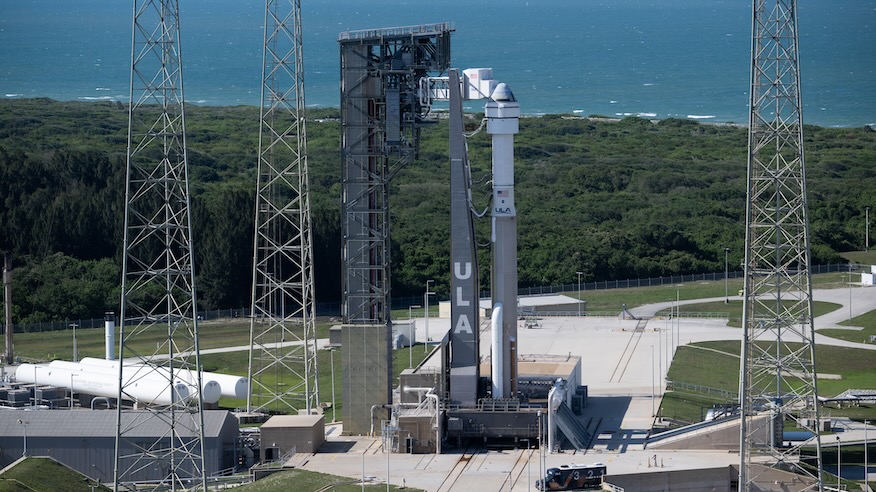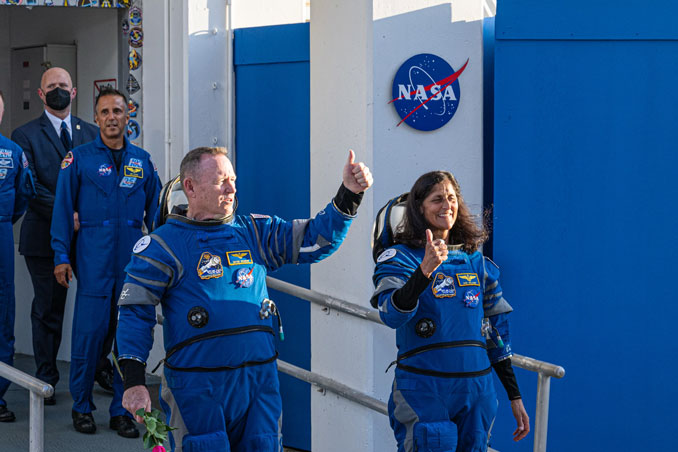
Launch teams are hoping that the third time will be the charm for the first crewed flight of Boeing’s Starliner spacecraft. It’s most recent launch attempt came within minutes of sending Butch Wilmore and Suni Williams on their way to the International Space Station, but was tripped up at the finish line when one of three redundant computers ran into trouble.
The problem was sourced back to what NASA described as “a failed power distribution source, which was fixed on June 2 by United Launch Alliance (ULA) engineers. The Starliner mission management team polled ‘go’ to proceed towards a launch attempt on June 5 at 10:52 a.m. EDT (1452 UTC).
Spaceflight Now will have live coverage of the mission beginning more than four hours prior to liftoff.
[embedded content]
“I really appreciate all the work by the NASA, Boeing, and ULA teams over the last week,” said Steve Stich, manager of NASA’s Commercial Crew Program, in a statement. “In particular, the ULA team worked really hard to quickly learn more about these issues, keep our NASA and Boeing teams informed, and protect for this next attempt. We will continue to take it one step at a time.”
Heading into the launch attempt, the 45th Weather Squadron forecast a 90 percent chance of favorable weather at liftoff with only cumulus clouds of possible concern. With some of the sunspots that caused the recent auroras around globe reemerging this week, meteorologists are also keeping an eye on solar activity.
A launch on Wednesday would set up the two-person crew to dock with the ISS a little more than 24 hours later on June 6. If all goes well with the mission, the crew will return for a landing in White Sands, New Mexico on June 14.
The launch attempt on June 5 is nearly a month after the original launch date of May 6. That launch was scuttled by an oxygen pressure relief valve on the Altas 5 rocket’s upper stage. The mission stood down for weeks as teams assessed a helium leak on the Starliner’s service module.
Coming out of a planned hold at T-minus 4 minutes during the second launch attempt, the countdown reached the T-minus 3 minutes and 50 seconds when one of the three ground launch sequencer circuit boards failed to synch with the other two, which caused the scrub.
ULA’s President and CEO Tory Bruno said because the mission faced an instantaneous launch window, there wasn’t enough time to properly assess the issue in real time to determine if a fix could be achieved before liftoff.
“The disappointment lasts for about three seconds. And then you just immediately get busy and do your job,” Bruno said while speaking with reporters on Saturday following the scrub.

Mark Nappi, Boeing’s Starliner project manager, said there was disappointment from his team as well, but that quickly turned to resilience.
“You know when you’re playing a game and you get a bad call, you’re a little irritated at first, or a little frustrated at first, but you immediately focus on the next pitch and that’s what our teams do, they’re focused on the next pitch,” Nappi said. “As soon as we went into the launch scrub and launch turnaround, I looked out into the control room and everybody had their heads down, working the procedures to get ready for another attempt.”
The Crew Flight Test of Starliner comes more than four years from SpaceX launching its first astronaut missions using its Crew Dragon spacecraft. Both companies won multi-billion dollar contracts from NASA to provide transporter for its astronauts as part of the Commercial Crew Program.
After the lunch of the Demo-2 mission, SpaceX went on to send more than 50 people to space over the course of 13 flights, 12 of which went to the ISS. Boeing is working to overcome a years-long delay due to numerous technical issues that cost the company more than $1 billion.
Once the CFT mission wraps up, Boeing will work with NASA to finish certifying Starliner for full crew rotation missions, which could begin as soon as the spring of 2025.
- SEO Powered Content & PR Distribution. Get Amplified Today.
- PlatoData.Network Vertical Generative Ai. Empower Yourself. Access Here.
- PlatoAiStream. Web3 Intelligence. Knowledge Amplified. Access Here.
- PlatoESG. Carbon, CleanTech, Energy, Environment, Solar, Waste Management. Access Here.
- PlatoHealth. Biotech and Clinical Trials Intelligence. Access Here.
- Source: https://spaceflightnow.com/2024/06/05/live-coverage-nasa-boeing-and-ula-prepare-third-launch-attempt-of-the-starliner-crew-flight-test/



